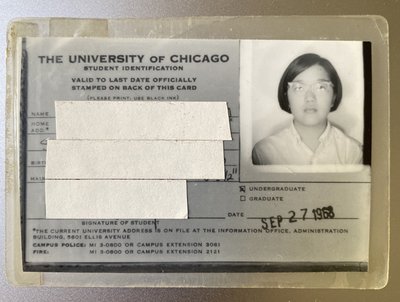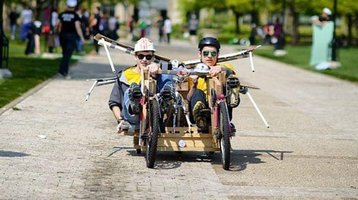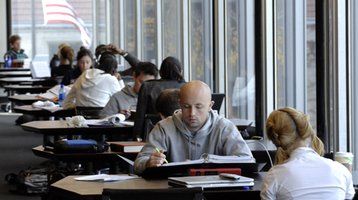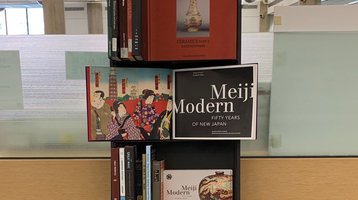Alumni memories of Regenstein Library: A hub for discovery and learning
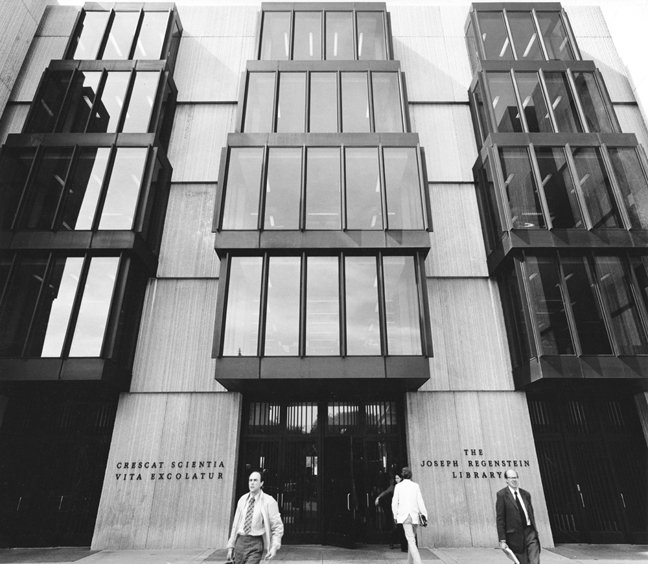
As we begin marking the 50th anniversary of the Joseph Regenstein Library, we have been reaching out to alumni to reminisce and share their favorite Regenstein Library memories. Alumni from each decade of the Library’s existence have spoken about their experiences and the ways the Library was important to them as a student and a graduate.
We can see through these alumni stories that the Reg has always been a hub connecting people and ideas; a catalyst for discovery, learning, and collaboration; and a great intellectual convener. Regenstein has served as a key part of student life since it was dedicated in October 1970. Among the stacks, study rooms, and Special Collections, a community of students, faculty, and alumni continues at the heart of the Regenstein Library.
Remarks have been edited for length and clarity.
1970s
Kathy Chiang, AB’72, College (Library Science); AM’74, Graduate Library School
I was an undergraduate when Regenstein opened. I worked there—filing slips in the Human Relations Area File. I studied there—I think the Second Floor was my regular spot.
I remember using the earliest photocopy machines when I didn't want to copy a table of numbers. The circulation system involved a weird early copy system on some kind of chemically infused paper.
My fifth year at Chicago, I was in the Library School and I was a “super page” working with the other student pages in the Special Collections department. I was there when the Joseph Halle Schaffner Collection in the History of Science arrived. Robert Rosenthal was the Curator. It was pretty special when he unwrapped Newton's Principia.
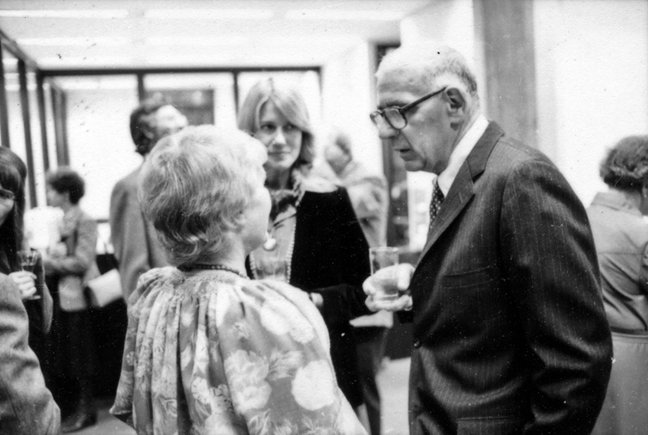
Susan Miller Levy, AM’73, Graduate Library School
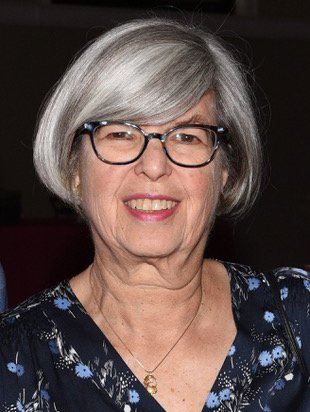
Fifty-two years ago, I was hired by Robert (Bob) Rosenthal, the first Curator of the newly created Department of Special Collections, to reorganize the Lincoln Collection. Bob counseled me that if I wanted a future in library management, I needed a professional degree, so I enrolled in GLS (Graduate Library School) while continuing to work in Special Collections. My time in GLS and in Special Collections overlapped the move from Harper Library to Regenstein Library, so I worked and had classes in both locations. I was part of the Special Collections team assigned to oversee movers from Hallett while they packed the collection carefully into cartons. We sealed the cartons and initialed the seal. Staff members walked with the movers to the Harper dock and saw the cartons with their precious content loaded into the trucks for the two-block drive north. We then met the trucks on the Regenstein dock and accompanied the dollies stacked with cartons into the new Special Collections stacks. There we broke the seals and the books were shelved in their new home.
After the move, I spent another year or two working in Special Collections until I completed my class work and moved on, first to the Center for Research Libraries and then to other career opportunities.
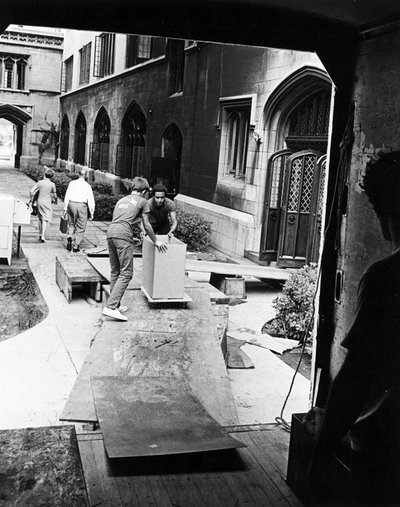
In 1995, I had the opportunity to become executive editor of R.R. Donnelley’s Lakeside Classics Series. This brought me back to the Regenstein as a researcher (with faculty spouse privileges). I was impressed all over again with the richness of the collection. I can’t overstate the importance of the Regenstein’s open stacks for fostering the serendipity of discovery. Nor can I imagine how I could have accomplished my 25 years as editor without the wonderful resources of the Regenstein and the Crerar.
Later, I was pleased to recommend the deposit of the R.R. Donnelley & Sons Company’s historic archive in Special Collections, thus assuring its preservation and availability to scholars.This gift included the beautiful display of painted and leaded glass windows now in the passageways of the Regenstein. It was accompanied by monetary contributions from the company and the Donnelley family for conservation and installation.
The final step in my story was being invited, about ten years ago, to join the Library Council (née Visiting Committee). It seemed like a Horatio Alger story to have risen from a $2.95 per hour research staff job to membership in this distinguished group that is charged with advising and supporting the libraries.
For the past 50 years, Regenstein has been an important part of my professional and intellectual life and will, I hope, continue to be so for many more.
Juana Harper, AB’74, College (Art History)
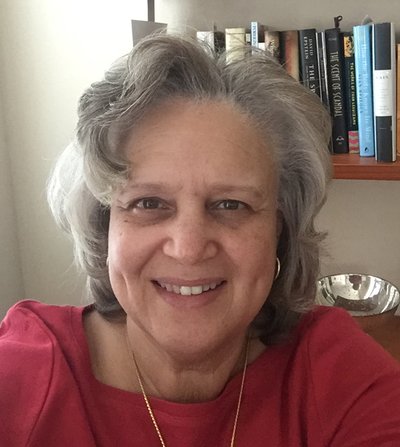
One of the things that impressed me most about Regenstein Library was its modern, cutting-edge design. It boldly stood out on a campus famous for Gothic architecture. The beautiful green velvet chairs enticed you to sit, curl up, and read much longer than intended. Each and every journey into the stacks was a wonderful adventure. While searching for a particular book, I invariably would find several others that I wanted to read. It was a privilege to have unrestricted access to such an extensive collection of materials.
Ellen Elizabeth Pearson, AB’78, College (Social Sciences)
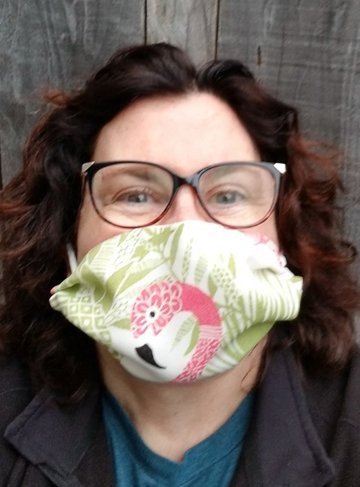
Regenstein was important to students; it was more than a source of learning. It was a refuge and a place where we vetted ideas, socialized, and laughed. Regenstein really was the mothership. You could find almost everything you needed. That’s why we spent so much time there. I wonder if it was more than 30 hours some weeks.
The stacks were troublesome and a delight because you would go into them looking for a specific book and then you get to the row and there would be two dozen more books on similar topics. Suddenly, you find you've taken a left turn from your original goal. We had mind-boggling access to first editions in literature and important reference materials.
I mean, how wonderful was that?
The Reg was a social place in that you could go down to the A Level to sit, snack, and drink coffee. But it really provided a venue for discourse outside of the classroom. In many cases, brilliant ideas came from that. I'd have to defend myself, defend my thinking. It was invaluable. Those experiences have served me well in my career. The skill to defend my ideas, to listen to and consider new ones that came from conversations on the A Level.
1980s
Jennifer L. Magnabosco, AB’85, College (Behavioral Sciences); AM’85 (Social Sciences)
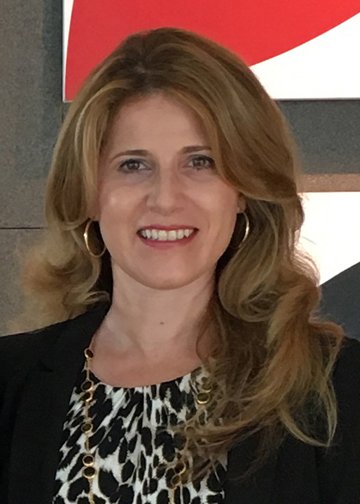
My first Reg memory is a sense memory. Every time I walked into the Reg, I would have this wonderful, sensational smell of books and papers come over me. I just loved being in the stacks and looking at the books in two main areas, psychology and history. I also spent a lot of time in the psychology assessment room as a student and an alum.
The Reg actually was a very social place. I did not spend a lot of time studying at the Reg because I would inevitably bump into people I knew who weren’t in my dorm, but people I knew across campus. I was a research assistant to a psychiatrist in the hospital who was a researcher and a clinician. So I did a lot of searching and photocopying of articles for research studies and my class papers.
For current and prospective students, I would recommend getting a little old school: go into the stacks and just browse!
1990s
Norman Yung, AB’93 College (Economics)
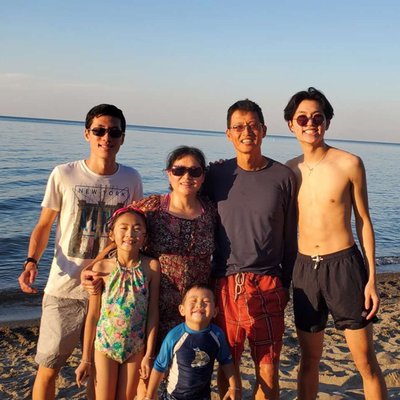
My most memorable time in Regenstein as a student was from my first year. It was around 1 a.m., and I was coming down the Reg elevator, ready to go back across the Midway to my dorm, and the elevator got stuck. I got my extra 15 to 20 minutes in the Library to study, and I guess that was a good thing.
But I think people do understand that the Library is beyond being just a place where you study and can find books. As a member of the Alumni Board, I have attended tours and events in the Reg since graduation, especially during reunion weekends. Many things have changed on campus, but Regenstein has remained the constant. I like to think it links generations and years of alumni.
2000s
Sheldon Levy, AB’09, College (Sociology)
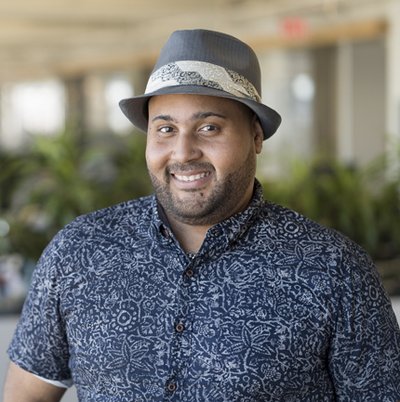
You would never think that the Library of a serious research university, or rather the sub-basement of the Reg, would be one of the biggest social hubs. The Reg was very much a place where you could pick up study tricks, where you could meet people who were studying for the same things. It's where you were able to talk to the people you thought were the smartest kids in your class, and you were maybe a little afraid to approach them, but you saw they were struggling with the same thing you were. You could come together and help each other. I think that was the biggest part of it—realizing that the learning, as much as we're judged as individuals, was a team effort.
The Reg was always the hub where everyone was. Working in a time when almost everybody had a computer of their own to work on, but not everybody just yet—we didn't really have smartphones widely, so there was a real need to be able to connect and plug in. I remember watching one of the 2008 debates in the Library. Plus, the Reg was the meeting place of all meeting places. You could always tell friends to meet you in front of Reg, and that’s where all the late-night buses started and ended as well. It truly was the center of campus life.
A more recent memory of mine from the Reg is actually from a recent Alumni Weekend. We did the Scav Hunt and one of the items was to do a drag race catwalk, so I did that in the Third Floor stacks.
Andrew Abbott, Gustavus F. and Ann M. Swift Distinguished Service Professor; AM’75 (Sociology); PhD’82 (Sociology)
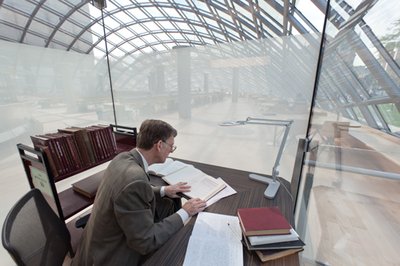
In 2009, I started a Random Reading Group for students in the Regenstein Library. The Reg is the right place to do this; it’s a way to celebrate the building as a place for reading.
The inspiration for this group was that on visits to Nuffield College at Oxford, I would find myself going to the College Library after supper and pulling a random book off the shelf. I wanted to bring that experience to students and to make our intellectual life more interesting.
Since I started this group, there have been about 260 meetings. On average about five to six people attend each meeting. When we first started, the old Harper Collection was in the basement of Regenstein, and the rule was to grab a random book from the Harper stacks. We would read for an hour and then report on our books. The format provided a comfortable platform for students to learn to present ideas confidently to a receptive audience. After all, one was the only expert on one's own book!
After the Harper Collection was reintegrated into the stacks, we opened up and picked books at random from anywhere in the stacks. However, we would have a theme – perhaps the word “volcano” had to appear in the title. Then, students would use the Reg online catalog to find a book that fit the theme. Other times, we would select a range of call numbers for random choice. As always, we would all read different books and convene on Friday evenings in a Reg study room. There’s a book in Regenstein about everything, old and new, and with our many graduate students from abroad, we would often read in three or four different languages. It is truly random reading.
2010-2020
Karlyn Gorski, AB’14 College (Public Policy Studies and International Studies); AM’18 (Sociology); Institute of Education Sciences Pre-Doctoral Fellow, PhD Candidate (Sociology)
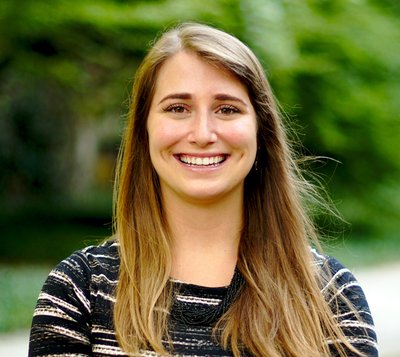
I was always a First Floor or an A Level person. I wanted to be able to chat, but I liked being able to look out the windows on the First Floor. I’d go with my boyfriend at the time or other people from my house. I remember this one class that I took, Quantitative Methods in Public Policy. We had office hours in the A Level, and I went to about every minute of every office hour. I pestered the professor with questions.
Over the years it has since become the place where I've taken classes that were held in the Reg, I've taken my students to the Reg for archival work, I've held my own office hours in the Reg, I joined the Random Reading Group that Professor Andrew Abbott informally hosts that, pre-COVID, would be in a study room every Friday evening. In the Reg, there’s been a whole gamut of undergrad learning experiences, undergrad social experiences, grad teaching experiences, grad learning experiences, and grad social experiences. All of that has happened in the Reg. Even during this pandemic, I’m able to have a relationship with the Reg. I went the other day to pick up a book curbside. I was just so happy to get a physical book. It was one of the absolute highlights of the last couple of weeks.
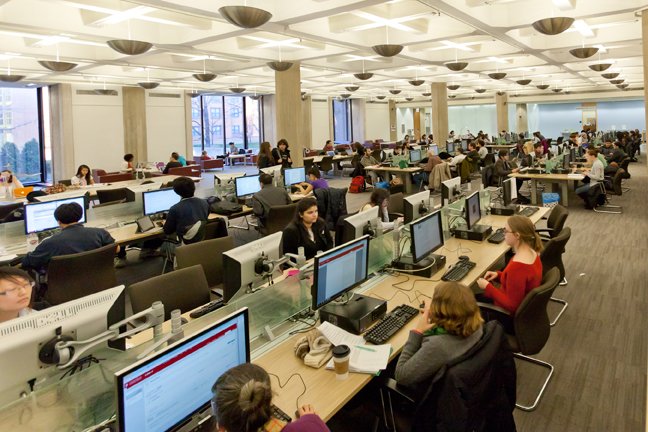
Grant Crum, AB’20, College (Public Policy Studies); MBA Candidate at the Chicago Booth School of Business
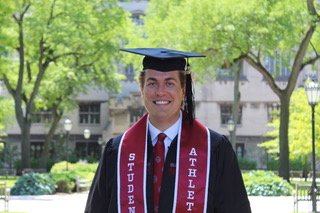
The Reg is one of the most important spaces on campus for student life. I know a lot of people that go to hang out, especially on the First Floor with the café and seating.
My favorite spots are the study rooms and being there with a group of my friends. We would all be doing homework, but still, hanging out together.
The Reg was always reliable for when I needed to get work done. For instance, I was working on a group project on the A Level with a few classmates the other quarter. We stayed in there, probably about nine or ten hours working on it, but we got it done in one fell swoop.
